The story of my oldest known ancestor begins with fire and eucalyptus smoke 45,000 years ago in a time where mega fauna and humans co-existed. Mungo Man’s journey began in far southern New South Wales and is one that has seen his significant history shared along his journey across the globe and back.
The Willandra Lakes region where Mungo man’s remains were discovered in 1974, is the home of three Aboriginal tribal clans – the Barkindji, Nigiyampaa, and my people the Mutti Mutti clan. Aboriginal people lived on the shores of the lakes where an abundance of vegetation and wildlife prospered along the fertile plains. Nowadays, the ancient lakes have dried up and given way to native salt tolerant bushes and grasses, but Mungo Man would have gazed upon fruitful landscapes that seem unimaginable now.
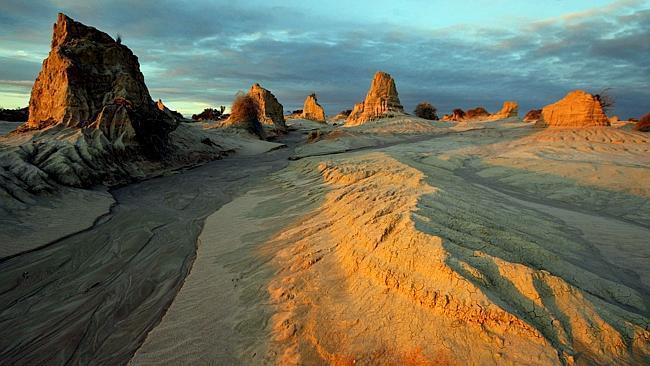
The dried up lake beds of Lake Mungo. Photo credit: Rick Morton
Forty-three years on and Mungo Man makes his 800km journey from The National Museum in Canberra, back to his final resting place with a few stops on the way. Mango Man was accompanied in Canberra by the remains of 104 others found in the area, including Mungo Lady who was returned to country twenty six years beforehand. The discovery of these ancient skeletal remains redefined what we know about not only Australian history but the history of humanity.
After four long-awaited decades the decision was made by the Australian National University to hand back these remains to the traditional owners. Due to the delicacy of his remains Mungo Man was driven across country in a hearse donated by the geologist who discovered both Mungo Man and Mungo Lady, Dr Jim Bowler.
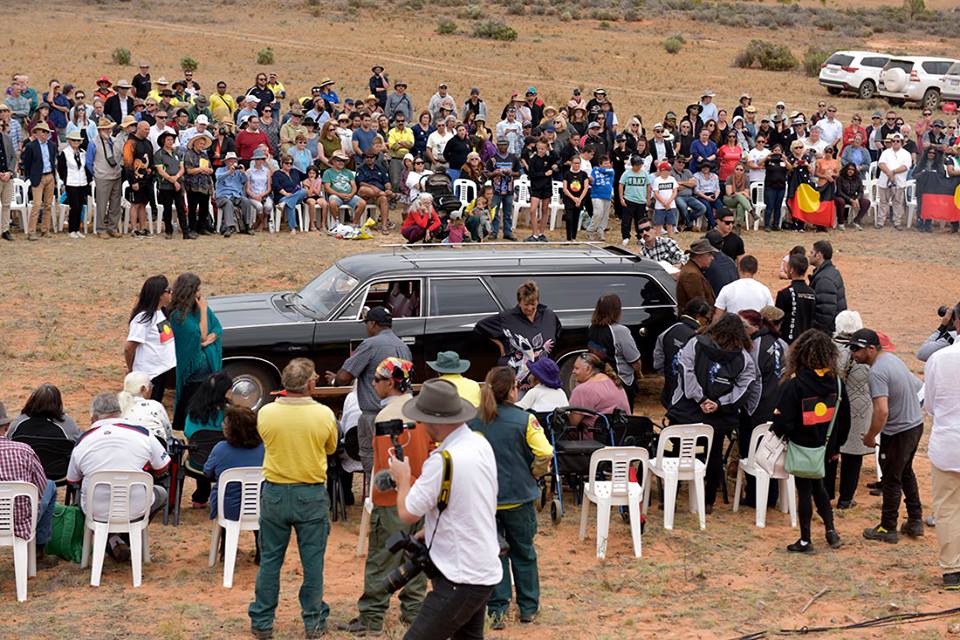
The hearse that carried Mungo Man through his 800km journey back home. Photo credit: Wayne Quilliam
After departing from Canberra the first two stops of the trip were made in Wagga Wagga and Hay located in the New South Wales Riverina region, where he was greeted with a welcome ceremony by members of the Wiradjuri clan. From there Mungo man headed 140km south of the Murrumbidgee River to the small country town of Balranald where the last three generations of my family were born. For me, Mungo Man’s eventual return to country stirred great emotions as I often think about what this would have signified for my Grandparents had they been around to mourn and celebrate his homecoming.
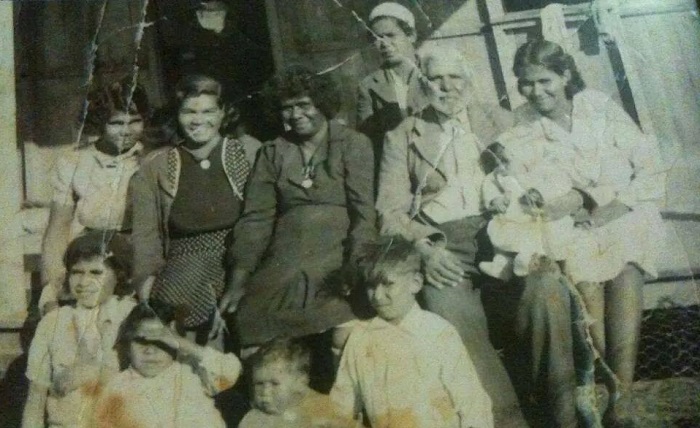
Three generations of my family – My Grandmother Lona Day (as a baby on the right) held by my great Grandmother Chrissie Day. My great Grandfather Henry Edwards (second adult to the right) sits next to his wife – my great great Grandmother Theresa Edwards (centre)
From Balranald, Mungo Man reached his final destination at Mungo National Park where hundreds gathered to commemorate his return to his rightful resting place. For many the emotions of the day were understandably mixed as for some the event marked a celebration and for others a funeral. I spoke to a range of different elders with varied opinions on Mungo Mans passage from sacred lands, into the White consciousness and back again. Opinions range from anger and disappointment that his bones were dug up and removed from country, to those who appreciate his anthropological value and the historical context that his discovery gives to Australia.
Upon Mungo Man’s removal archaeologists found traces of Ochre on his bones brought from 200km away which suggested his position within a constructed hierarchy; an indication of a sophisticated social structures and belief systems. As a nation, the significance of Australia’s oldest communities inform the human connection with these lands and create a linkage between past and present.
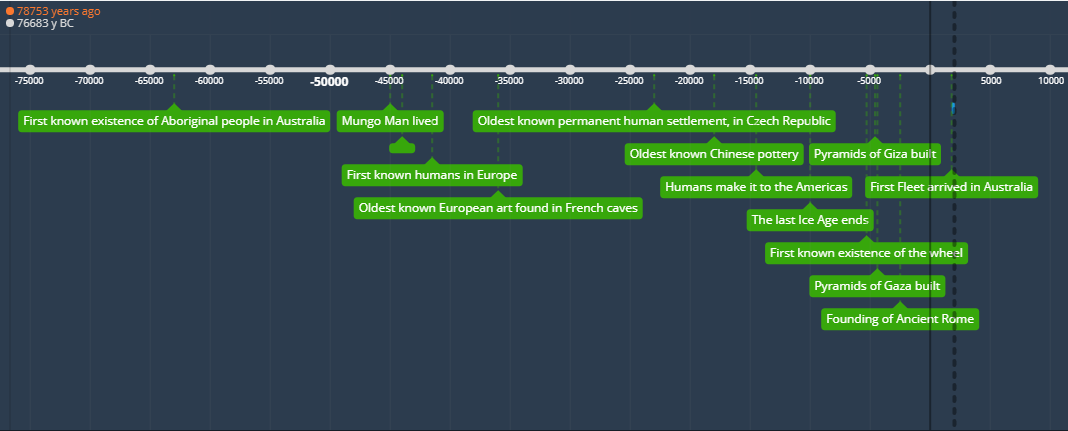
Mungo Man’s existence compared to notable historical world events. Created in Timeglider. Click to expand timeline
On Mungo Man’s arrival home, traditional owners danced on the sacred lake beds, calling on their ancestors for strength and guidance. Not long after, a gusting wind swirled over the lake as if to awaken the land to the fact that its special ancestor and custodian had now finally returned home.
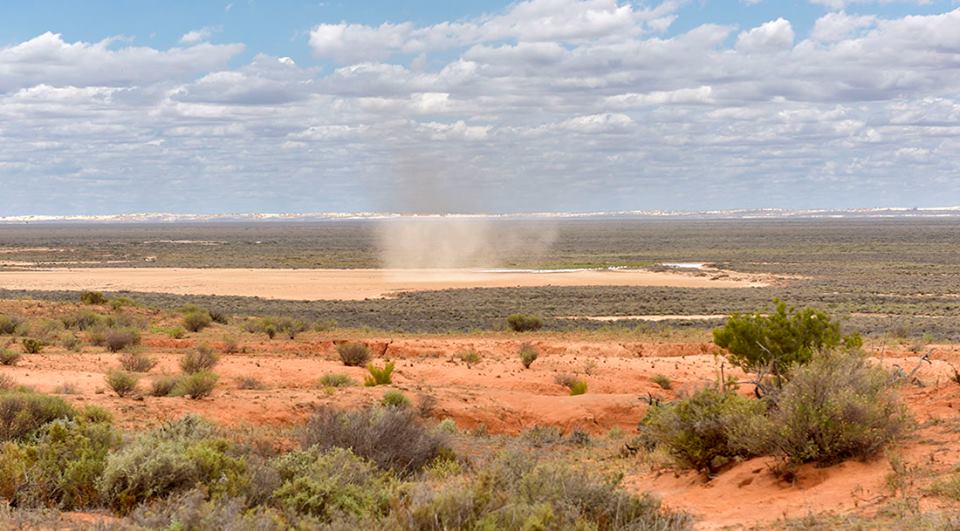
A divine gust of wind was witnessed by people at the sight signifying the presence of Mungo Man. Photo credit: Wayne Quilliam
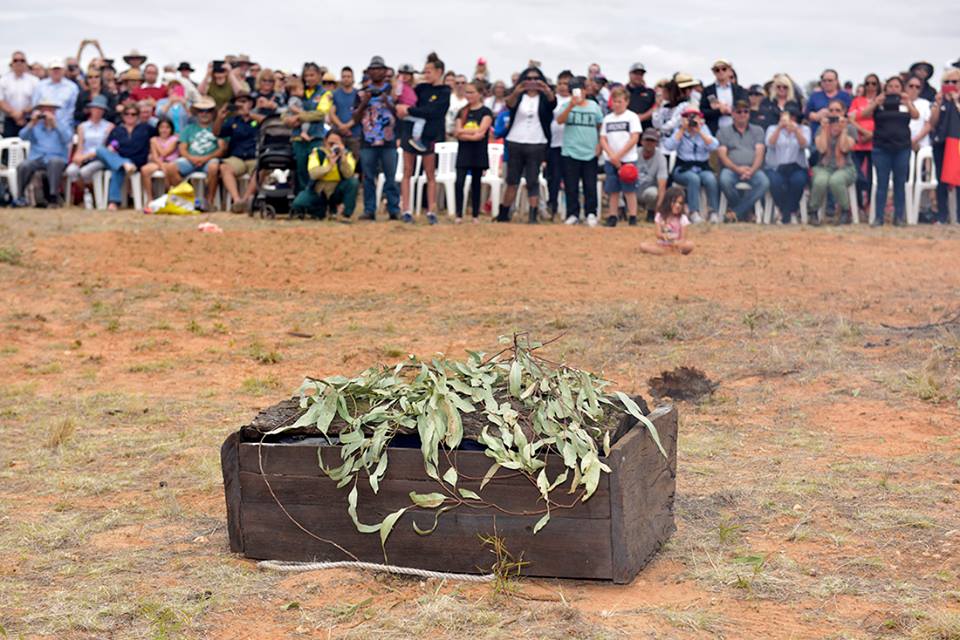
The crowd gathers around Mungo Man’s remains at Lake Mungo. Photo credit: Wayne Quilliam
As a proud Mutti Mutti woman and ancestor of Mungo Man, special occasions like these further strengthen my connection to my land and culture. Such experiences empower me as young Aboriginal person and encourage me to continue the songlines passed down from my elders. Understanding the life, death and migration of Australia’s oldest ancestor instils hope that we will be here for at least another 45,000 years keeping the fire and smoke bellowing.
